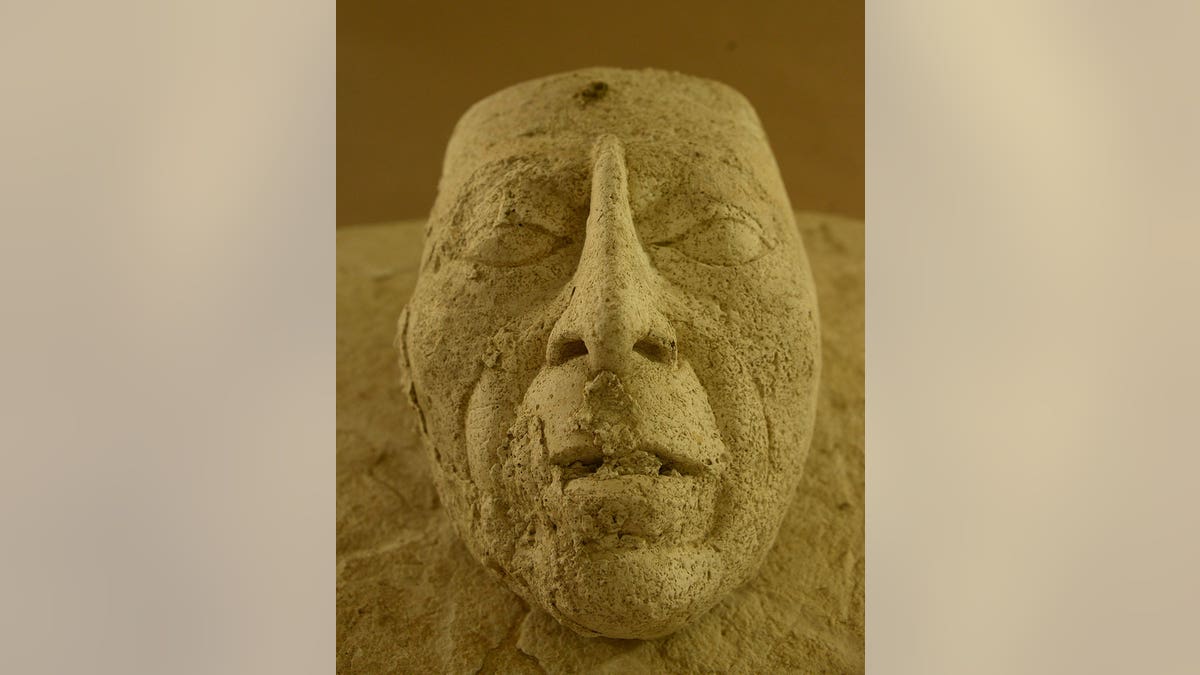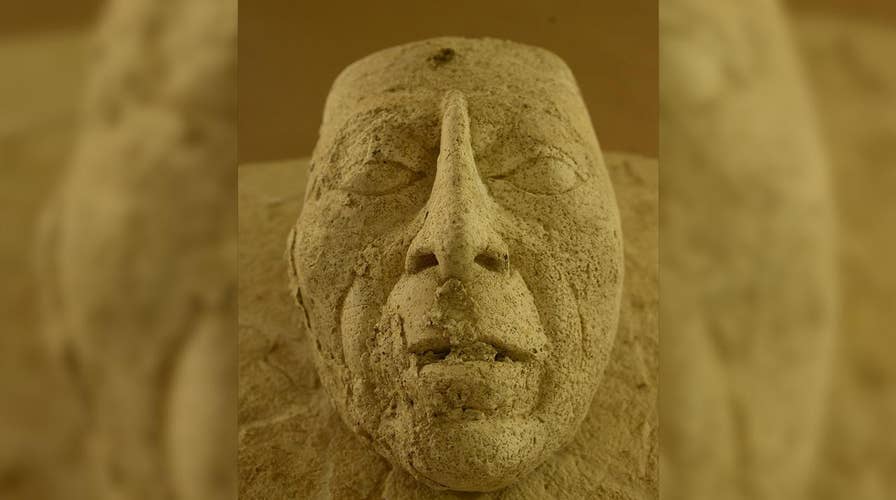1,500-year-old mask of Maya ruler found
Researchers have uncovered a 1,500-year-old stucco mask of Maya ruler K'inich Janaab 'Pakal. What differentiates this mask from others is it’s seemingly made in the king’s likeness.
An ancient mask depicting a 7th-century Maya king has been discovered in southern Mexico.
The find was made in the famous ancient city of Palenque in the Mexican state of Chiapas. Archaeologists discovered the mask in an architectural complex at Palenque known as El Palacio.
The discovery was revealed in a statement released by Mexico’s Instituto Nacional de Antropologia e Historia (INAH).
MYSTERIOUS LOST MAYA CITIES DISCOVERED IN GUATEMALAN JUNGLE
Archaeologists say that the sculpture symbolizes 7th-century Maya ruler K'inich Janaab 'Pakal, known as “Pakal the Great.”

The stucco mask that is believed to depict "Pakal the great" (Héctor Montaño, INAH) (Hector Montano)
While the specific origins of the stucco mask are unknown, experts noted its naturalistic size and style. The artifact, they added, was part of some architectural decoration.
Other ancient objects found at the site include a figurine that resembles a river shrimp and a glass with lily and fish motifs.
A UNESCO world heritage site, Palenque’s ruins continue to offer fresh glimpses of the lost Maya civilization. “Palenque was at its height between AD 500 and 700,” explains UNESCO, on its website. “The elegance and craftsmanship of the buildings, as well as the lightness of the sculpted reliefs with their Mayan mythological themes, attest to the creative genius of this civilization.”
GRUESOME HUMAN SACRIFICE DISCOVERY: SKULLS REVEAL GRISLY SECRETS OF LOST AZTEC CITY
In 2016 archaeologists at Palenque discovered an underground water tunnel built under the Temple of Inscriptions, which houses the tomb of Pakal.
Earlier this year archaeologists harnessed sophisticated technology to reveal lost cities and thousands of ancient structures deep in the Guatemalan jungle, confirming that the Maya civilization was much larger than previously thought.
From its heart in what is now Guatemala, the Maya empire reached the peak of its power in the sixth century A.D., according to History.com, although most of the civilization’s cities were abandoned around 900 A.D.
The Associated Press contributed to this article.
Follow James Rogers on Twitter @jamesjrogers





















